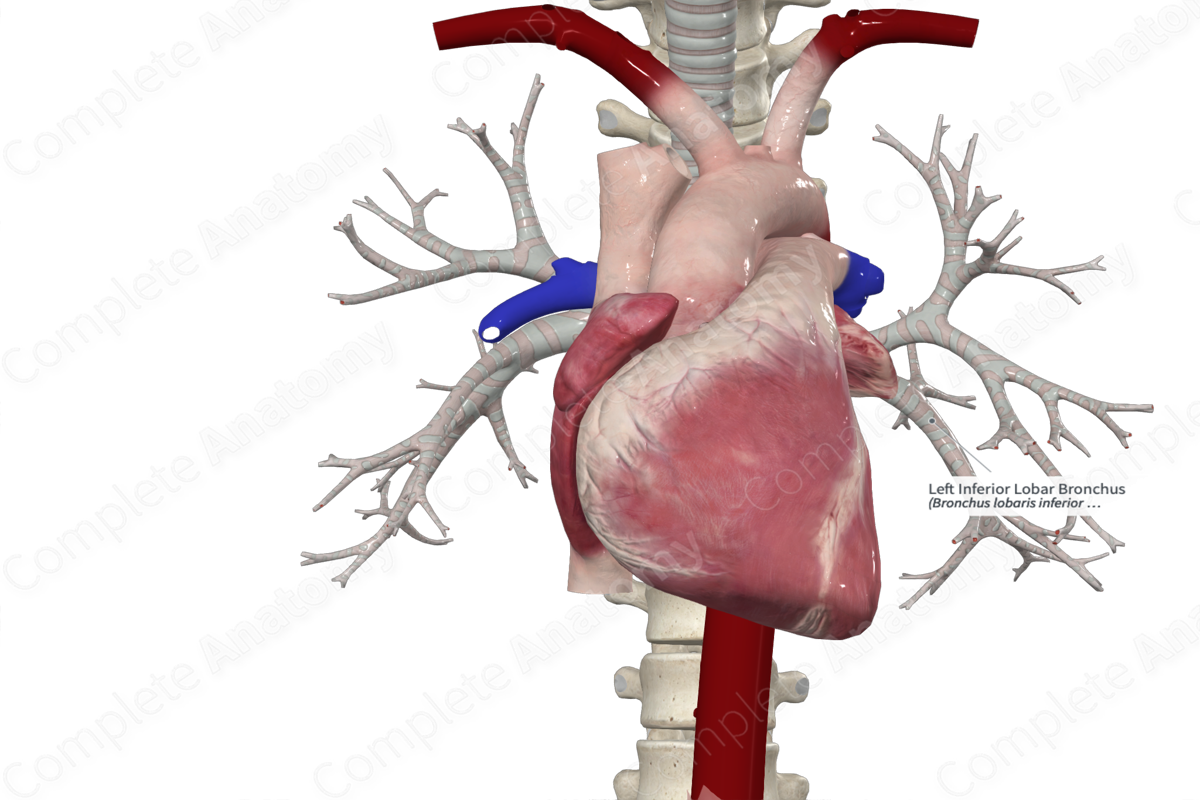
Structure
The left inferior lobar bronchus arises as a branch of the left main bronchus. It descends posterolaterally to enter the inferior lobe of the left lung. Initially, the left inferior lobar bronchus gives off the superior segmental bronchus posteriorly. The left inferior lobar bronchus continues inferiorly, giving off an anteromedial basal segmental bronchus and finally the posterior and lateral basal segmental bronchi. These bronchial branches ensure each bronchopulmonary segment of the inferior lobe of the left lung is supplied with an airway.
Related parts of the anatomy
Key Features/Anatomical Relations
The left inferior lobar bronchus is accompanied by the inferior lobar artery and its continuation as the basal part of the inferior lobar artery. A subsuperior (or subapical) segmental bronchus may arise from the left inferior lobar bronchus, just below the origin of the superior segmental bronchus. The anterior basal segmental branch may arise from the left inferior lobar bronchus, independent from the medial basal segmental bronchus (Standring, 2016).
References
Standring, S. (2016) Gray's Anatomy: The Anatomical Basis of Clinical Practice. Gray's Anatomy Series 41 edn.: Elsevier Limited.



